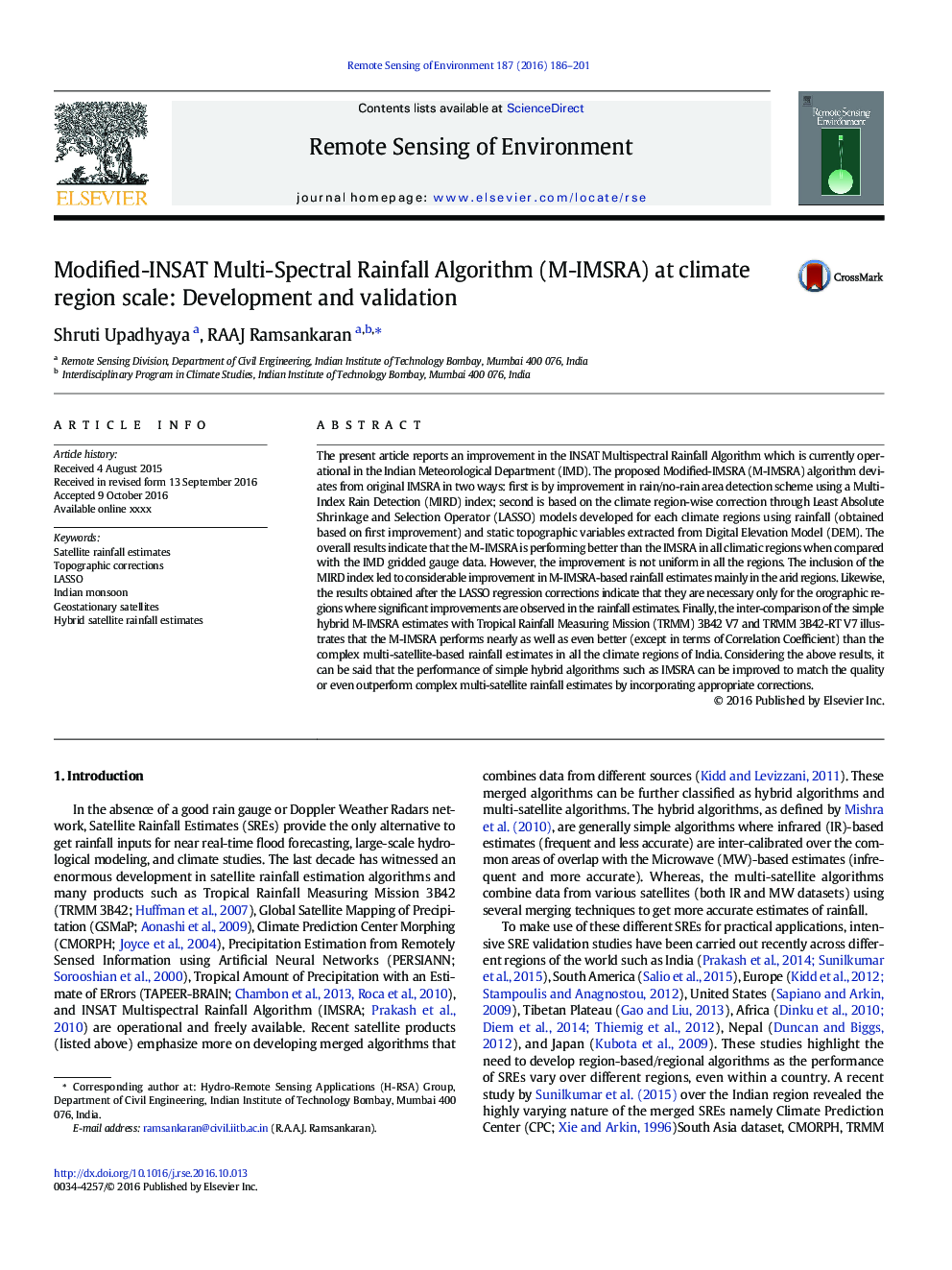| Article ID | Journal | Published Year | Pages | File Type |
|---|---|---|---|---|
| 6344832 | Remote Sensing of Environment | 2016 | 16 Pages |
Abstract
The present article reports an improvement in the INSAT Multispectral Rainfall Algorithm which is currently operational in the Indian Meteorological Department (IMD). The proposed Modified-IMSRA (M-IMSRA) algorithm deviates from original IMSRA in two ways: first is by improvement in rain/no-rain area detection scheme using a Multi-Index Rain Detection (MIRD) index; second is based on the climate region-wise correction through Least Absolute Shrinkage and Selection Operator (LASSO) models developed for each climate regions using rainfall (obtained based on first improvement) and static topographic variables extracted from Digital Elevation Model (DEM). The overall results indicate that the M-IMSRA is performing better than the IMSRA in all climatic regions when compared with the IMD gridded gauge data. However, the improvement is not uniform in all the regions. The inclusion of the MIRD index led to considerable improvement in M-IMSRA-based rainfall estimates mainly in the arid regions. Likewise, the results obtained after the LASSO regression corrections indicate that they are necessary only for the orographic regions where significant improvements are observed in the rainfall estimates. Finally, the inter-comparison of the simple hybrid M-IMSRA estimates with Tropical Rainfall Measuring Mission (TRMM) 3B42 V7 and TRMM 3B42-RT V7 illustrates that the M-IMSRA performs nearly as well as even better (except in terms of Correlation Coefficient) than the complex multi-satellite-based rainfall estimates in all the climate regions of India. Considering the above results, it can be said that the performance of simple hybrid algorithms such as IMSRA can be improved to match the quality or even outperform complex multi-satellite rainfall estimates by incorporating appropriate corrections.
Related Topics
Physical Sciences and Engineering
Earth and Planetary Sciences
Computers in Earth Sciences
Authors
Shruti Upadhyaya, RAAJ Ramsankaran,
